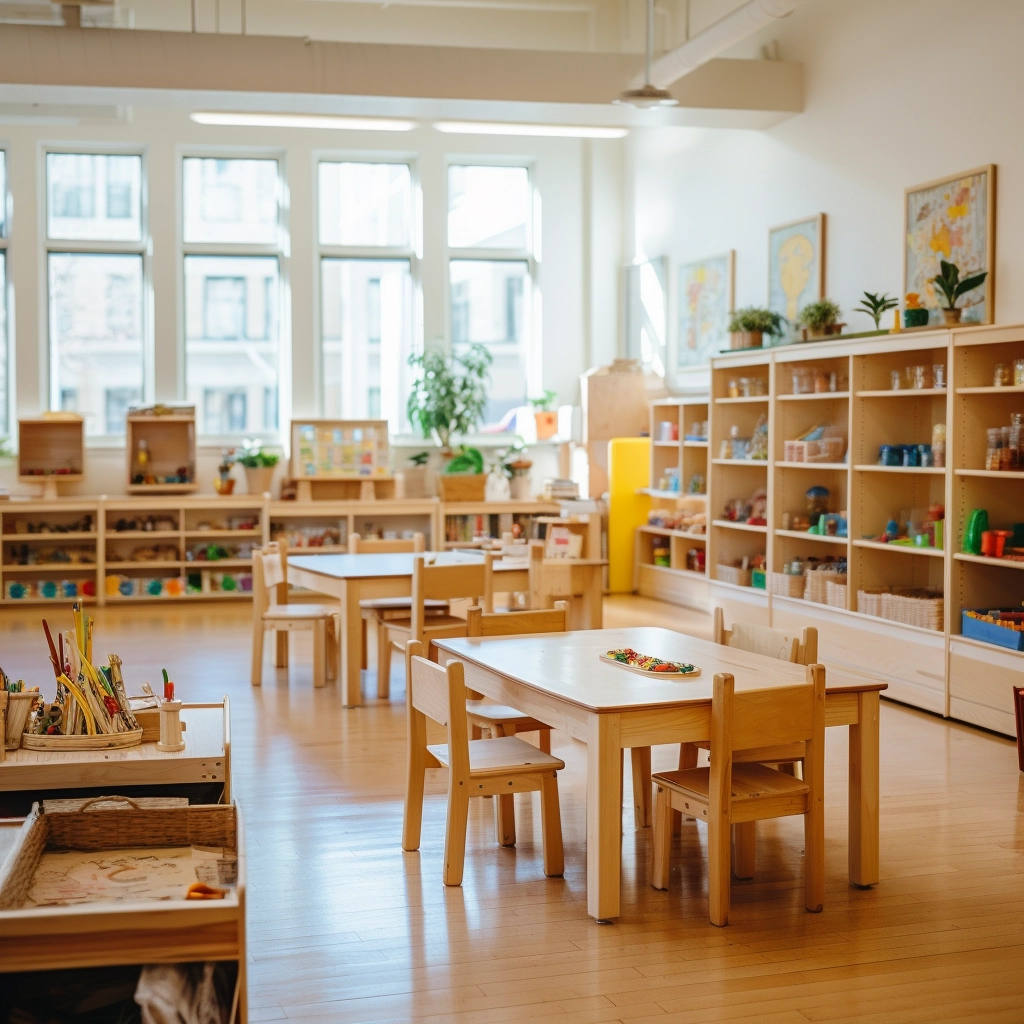Do you want to spark curiosity and excitement in your little ones? Are you looking for fun and easy science activities for preschoolers that will turn everyday moments into hands-on learning adventures? Whether you’re a teacher, parent, or caregiver, finding engaging ways to introduce science can sometimes feel overwhelming. How do you make science fun, simple, and age-appropriate while still being educational?
The best way to introduce science to preschoolers is through play! This guide explores 30 exciting and easy science activities for preschoolers that encourage exploration, creativity, and hands-on learning. From bubbling volcanoes and color-changing milk to sensory-rich experiences and seasonal experiments, these activities captivate young minds while strengthening critical thinking and problem-solving skills.
Science is everywhere, and young children are naturally curious about the world around them. With these engaging science activities, you can transform your classroom, backyard, or kitchen into a place of discovery. Get ready to explore, experiment, and watch your preschoolers light up with wonder—because the possibilities are endless when learning feels like play!

How Science Fuels Early Learning and Development
Science activities are more than entertainment—they are powerful tools for building foundational skills in early childhood. From cognitive growth to motor development and communication, engaging in scientific exploration allows children to learn in meaningful, lasting ways. Through hands-on discovery, preschoolers begin to ask questions, make predictions, and understand the world through observation and experimentation.
Learning Through Exploration and Problem-Solving
Science activities teach children how to think critically and solve problems. For instance, a simple sink or float experiment encourages preschoolers to make predictions about objects before testing them. These experiences foster logical reasoning, attention to detail, and curiosity about the physical world. Children learn to test their ideas, observe outcomes, and adapt their thinking based on real-life feedback.
Encouraging Thoughtful Communication
When children engage in science activities, they naturally expand their language skills. Describing what they observe, discussing results, and asking follow-up questions help build their vocabulary and improve their ability to express thoughts clearly. Words like “evaporate,” “absorb,” and “dissolve” become part of their everyday language through meaningful use in context-rich situations.
Developing Physical Coordination and Control
Many science activities require the use of hands and full-body movement. Tasks such as pouring water, stirring mixtures, sorting objects, or digging in the dirt provide opportunities to refine both fine and gross motor skills. Outdoor experiments like collecting leaves or measuring rainfall not only connect children with nature but also strengthen muscle control and coordination.
Inspiring Creative Thinking and Imagination
Science encourages preschoolers to explore cause and effect through open-ended experimentation. Activities such as mixing baking soda with vinegar or watching milk swirl with food coloring invite them to think outside the box and imagine new possibilities. These moments spark creative problem-solving and make learning fun, engaging, and meaningful.
Laying the Groundwork for STEM Success
Introducing scientific concepts at an early age helps children build the skills needed for success in science, technology, engineering, and math (STEM) fields later on. Through early exposure to experimentation and discovery, preschoolers learn to observe patterns, analyze outcomes, and develop a sense of curiosity and confidence in their ability to figure things out.
Age-Appropriate Science Activities for Different Developmental Stages
Not all science activities for preschoolers are equally suitable for every age. Younger preschoolers thrive on sensory exploration, while older preschoolers are ready for structured experiments. By selecting activities that align with a child’s developmental stage, we can ensure that science remains engaging, fun, and educational.
The table below lists the best types of age-appropriate science activities for preschoolers, considering their learning characteristics and cognitive abilities. This guide will help parents, teachers, and caregivers choose activities that best support a child’s natural curiosity and growth.
| Age Group | Learning Characteristics | Best Science Activity Types | Key Focus |
| 2-3 Years Old (Younger Preschoolers) | – Learn through senses (touch, sight, smell, sound) – Short attention spans – Enjoy exploring textures and colors | – Science and sensory activities – Observation-based activities – Nature-based activities | – Hands-on sensory exploration – Encouraging verbal descriptions – Observing cause and effect without structured experiments |
| 3-4 Years Old (Middle Preschoolers) | – Start to ask “why” and make simple predictions – Can follow basic instructions – Enjoy hands-on, interactive play | – Simple cause-and-effect experiments – Nature and life science – Basic physical science | – Introducing basic scientific reasoning – Encouraging predictions and discussions – Short but engaging hands-on experiments |
| 4-5 Years Old (Older Preschoolers) | – Developing problem-solving skills – Can follow multi-step instructions – Begin to record and compare results | – Structured preschool science experiments – Basic chemistry and physics – Math-integrated science | – Encouraging hypothesis testing – Introducing essential data collection – Strengthening STEM foundations |
30 Fun and Easy Science Activities for Preschoolers
These preschool science activities are designed to be hands-on, simple, and exciting. Through engaging experiments, preschoolers can use everyday materials to explore basic science concepts like cause and effect, states of matter, and chemical reactions. Each activity includes a description, materials, step-by-step instructions, and an explanation of why it works to ensure a fun and educational experience.
1. Rainbow Milk Science Preschool Activity
Concept: Surface tension and color mixing
Materials:
- Whole milk
- Food coloring
- Dish soap
- Cotton swabs
- Shallow dish
Instructions:
- Pour milk into the dish.
- Add drops of food coloring.
- Dip a cotton swab in dish soap and touch the milk’s surface.
- Watch the colors swirl and mix in fascinating patterns!
Why It Works:
Milk contains fat molecules that interact with soap, breaking the surface tension and causing the colors to move.
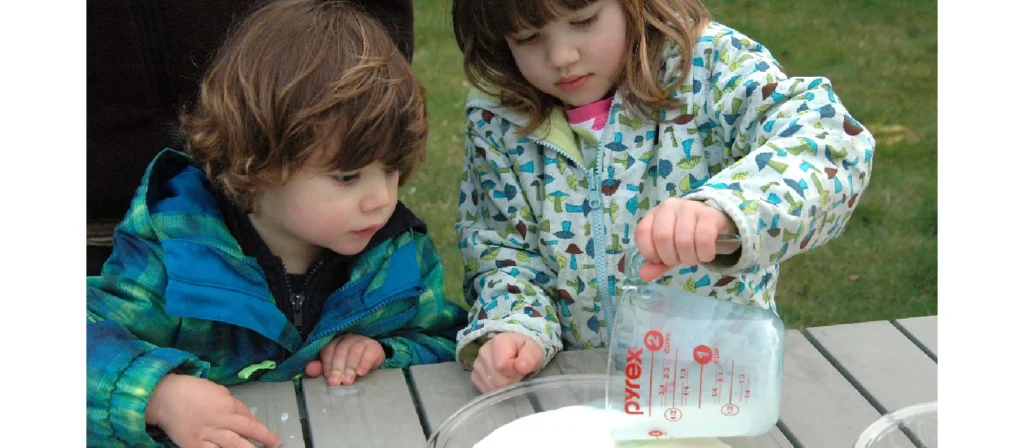
2. Baking Soda and Vinegar Volcano Science Preschool Activity
Concept: Chemical reactions
Materials:
- Small cup or bottle
- Baking soda
- Vinegar
- Food coloring (optional)
- Dish soap (optional for extra fizz)
Instructions:
- Fill the cup halfway with baking soda.
- Add a few drops of food coloring and dish soap.
- Slowly pour vinegar into the cup and watch it erupt like a volcano!
Why It Works:
Baking soda (a base) reacts with vinegar (an acid), producing carbon dioxide gas, which creates the bubbling eruption.

3. Walking Water Science Preschool Activity
Concept: Capillary action and color mixing
Materials:
- 3 clear cups
- Water
- Food coloring (red, yellow, blue)
- 2 paper towels
Instructions:
- Fill two cups with water and add different food colors. Leave the middle cup empty.
- Place one end of a paper towel in the colored water and the other end in the empty cup.
- Repeat with the second paper towel, connecting the other colored cup to the empty cup.
- Observe how the water “walks” up the towel and into the middle cup, mixing the colors.
Why It Works:
Capillary action allows water to travel through the paper towel fibers, carrying colors.

4. Ice Excavation Science Preschool Activity
Concept: States of matter and melting points
Materials:
- Small plastic toys (like dinosaurs or buttons)
- An ice cube tray or a plastic container
- Water
- Salt
- Warm water
- Eye droppers
Instructions:
- Freeze small toys inside ice cubes overnight.
- Give kids salt and warm water in droppers.
- Let them “excavate” the toys by melting the ice with salt and water!
Why It Works:
Salt lowers water’s freezing point, causing ice to melt faster. Warm water speeds up the process, creating an exciting excavation game!
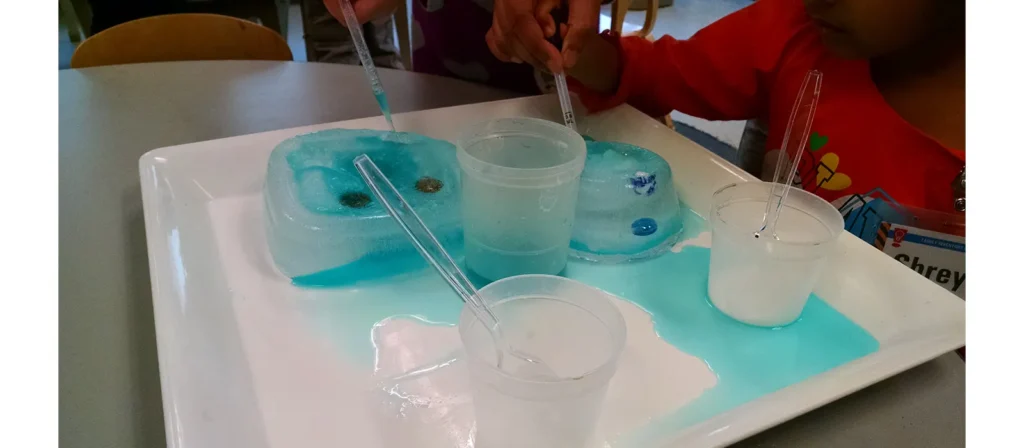
5. Shadow Tracing Science Preschool Activity
Concept: Light and shadow movement
Materials:
- Chalk
- A sunny day
- Objects (toys, plants, or a friend)
Instructions:
- Place an object outside in the sun and trace its shadow with chalk.
- Wait a few hours and retrace the shadow.
- Compare how the shadow has moved and changed shape.
Why It Works:
This engaging preschool science activity helps kids understand that the Earth’s rotation changes the sun’s position in the sky, shifting shadows throughout the day.

6. Magic Expanding Soap Science Preschool Activity
Concept: Air pockets and heat reaction
Materials:
- A bar of Ivory soap
- Microwave-safe plate
- Microwave
Instructions:
- Place the soap on a plate and microwave for 1 minute.
- Watch as the soap expands and turns into a fluffy cloud!
Why It Works:
Ivory soap has air pockets that expand when heated, causing it to puff up dramatically.
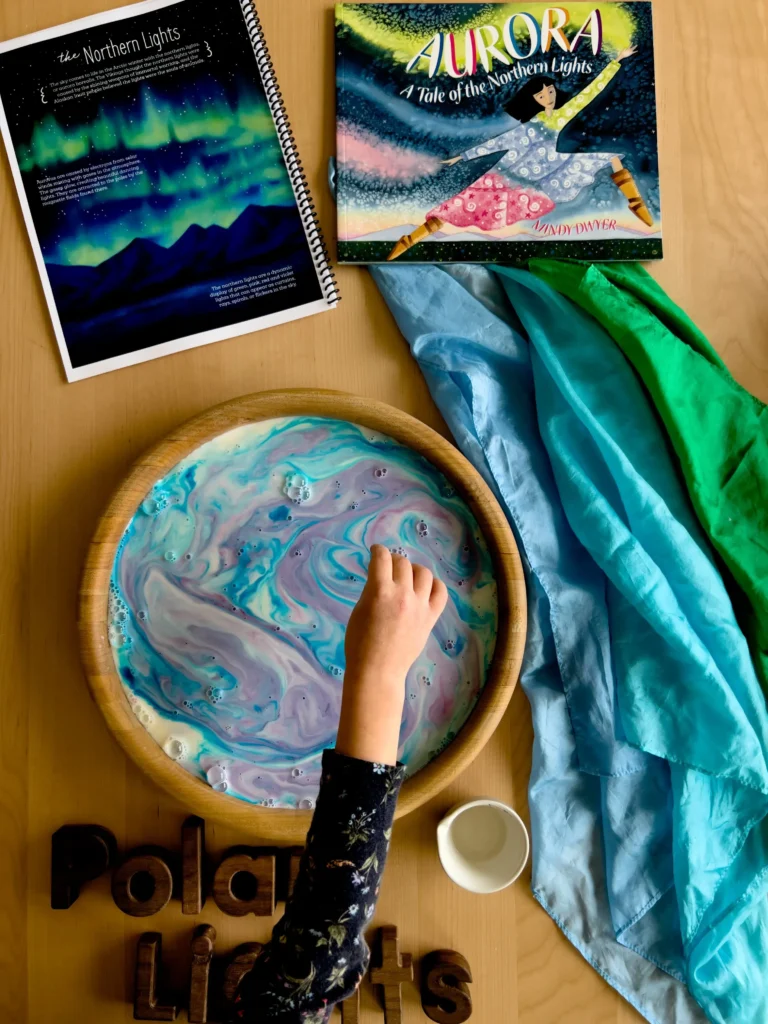
7. Sink or Float Science Preschool Activity
Concept: Density and buoyancy
Materials:
- A large bowl of water
- Various objects (toy car, plastic cup, rock, cork, apple, coin)
Instructions:
- Collect different objects and have kids guess if they will sink or float.
- Place each object in the water and observe what happens.
- Discuss why some objects float while others sink.
Why It Works:
This classic science preschool activity helps children understand that objects with lower density than water will float, while those with higher density will sink.
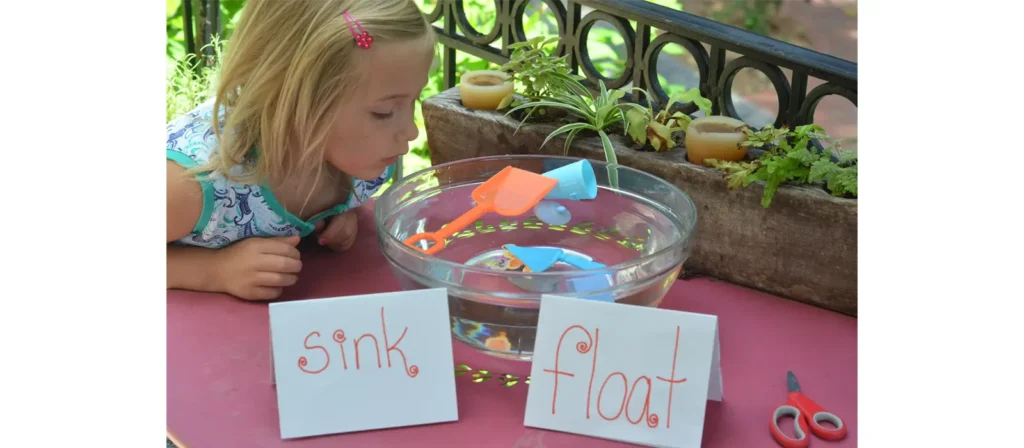
8. DIY Rainstorm in a Jar
Concept: Precipitation and water movement
Materials:
- Large glass jar
- Shaving cream
- Water
- Blue food coloring
Instructions:
- Fill the jar ¾ complete with water.
- Add a thick layer of shaving cream on top.
- Drop blue food coloring on the shaving cream and watch “rain” inside the jar.
Why It Works:
The shaving cream represents clouds; as the “clouds” fill with water, “rain” falls when the cloud becomes too heavy.
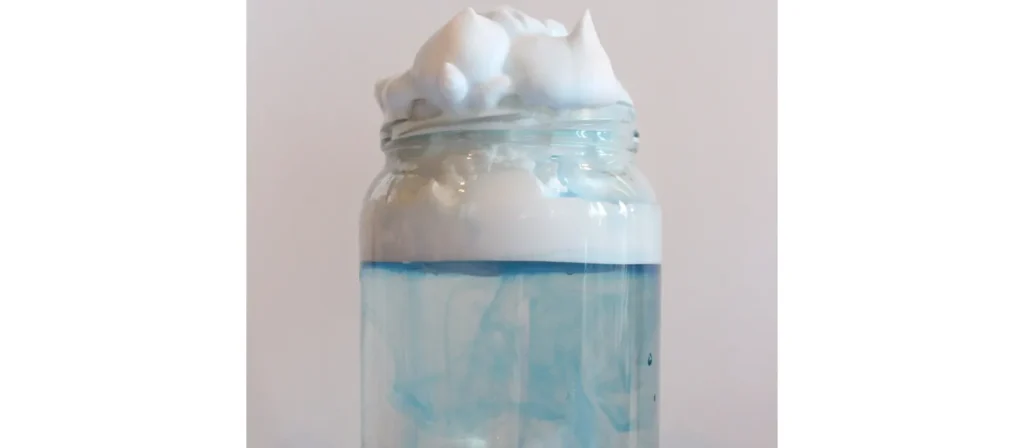
9. Dancing Raisins Science Preschool Activity
Concept: Gas and buoyancy
Materials:
- Clear glass
- Carbonated soda
- Raisins
Instructions:
- Pour soda into the glass.
- Drop raisins into the soda.
- Watch as the raisins move up and down as bubbles attach and release.
Why It Works:
Carbon dioxide bubbles stick to the raisins, raising them. When the bubbles pop, the raisins sink again.
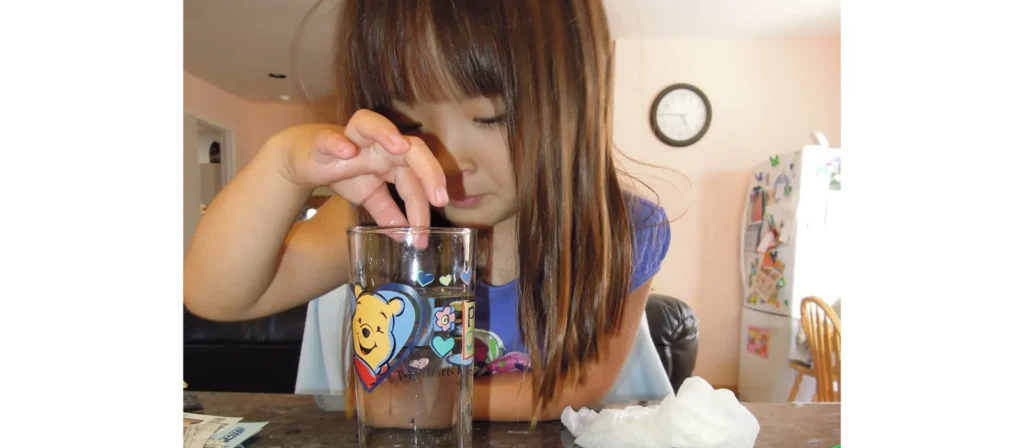
10. Balloon-Powered Car Science Preschool Activity
Concept: Air propulsion and motion
Materials:
- Balloon
- Straw
- Tape
- Small toy car
Instructions:
- Tape a straw to the back of a small toy car.
- Insert the balloon into the straw and blow it up.
- Release the balloon and watch the car move forward!
Why It Works:
This exciting preschool science Activity demonstrates Newton’s Third Law of Motion—air rushing out of the balloon pushes the car forward.
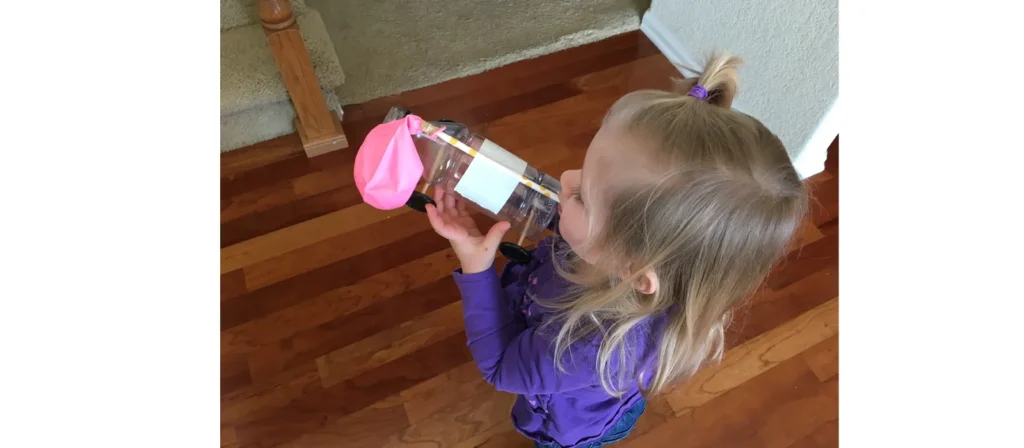
11. DIY Magnetic Putty Science Preschool Activity
Concept: Magnetism and materials science
Materials:
- White school glue
- Liquid starch
- Iron oxide powder
- Strong magnet
Instructions:
- Mix glue and liquid starch to create putty.
- Add iron oxide powder and knead until smooth.
- Bring a strong magnet close to the putty and watch it stretch and move!
Why It Works:
The iron oxide makes the putty magnetic, attracting it to the magnet.

12. DIY Lava Lamp Science Preschool Activity
Concept: Density and chemical reactions
Materials:
- Clear bottle or jar
- Water
- Vegetable oil
- Food coloring
- Alka-Seltzer tablet
Instructions:
- Fill a bottle ¾ complete with vegetable oil.
- Add water until nearly complete.
- Drop in food coloring.
- Add a small piece of Alka-Seltzer and watch bubbles form.
Why It Works:
Oil and water don’t mix, and the reaction between Alka-Seltzer and water produces gas, creating rising bubbles.

13. Magic Floating Paper Clip Science Preschool Activity
Concept: Surface tension and buoyancy
Materials:
- Paper clips
- Water
- Tissue paper
Instructions:
- Fill a bowl with water.
- Place a paper clip on top of a dry tissue paper and carefully lower it into the water.
- Watch as the tissue sinks, but the paper clip stays afloat!
Why It Works:
Water’s surface tension creates a thin film strong enough to support the lightweight paper clip.
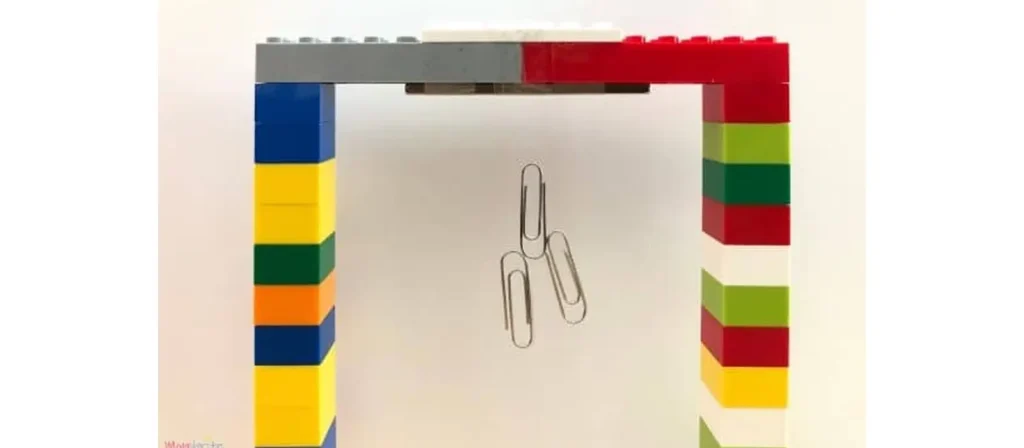
14. Bouncing Eggs Science Preschool Activity
Concept: Chemical reactions and osmosis
Materials:
- Egg
- Vinegar
- Glass jar
Instructions:
- Place an egg in a jar and cover it with vinegar.
- Let it sit for 24-48 hours, then gently rinse.
- Try bouncing the egg on a soft surface.
Why It Works:
In this preschool science experiment, vinegar dissolves the eggshell, leaving behind a rubbery membrane that makes the egg bounce.

15. Color-Changing Spoon Science Preschool Activity
Concept: Temperature and color reaction
Materials:
- Color-changing spoons (available online or in toy stores)
- Ice water
- Warm water
Instructions:
- Place one spoon in warm water and one in ice water.
- Observe how the colors change instantly.
- Let them return to room temperature and watch the colors shift again.
Why It Works:
The spoon contains thermochromic pigments, which change color based on temperature.

16. Grow Crystals Science Preschool Activity
Concept: Crystallization and evaporation
Materials:
- Borax or salt
- Warm water
- Pipe cleaners
- Jars
Instructions:
- Shape a pipe cleaner into a design and place it in a jar.
- Mix warm water with borax or salt until fully dissolved.
- Pour the solution into the jar and let it sit overnight.
Why It Works:
As the water evaporates, the dissolved substance crystallizes, forming sparkly structures.

17. Tornado in a Bottle Science Preschool Activity
Concept: Vortex formation and motion
Materials:
- Two plastic bottles
- Water
- Glitter (optional)
- Duct tape
Instructions:
- Fill one bottle with water and glitter.
- Tape the second bottle upside down onto the first.
- Flip and swirl the bottle to create a tornado effect.
Why It Works:
The swirling motion creates a vortex, demonstrating how tornadoes form in nature.

18. Static Electricity with Balloons Science Preschool Activity
Concept: Static charge and attraction
Materials:
- Balloons
- Small pieces of paper
- Wool sweater
Instructions:
- Blow up a balloon and rub it against wool or hair.
- Hold the balloon near small paper pieces and observe them sticking.
Why It Works:
The science preschool activity creates static electricity, which attracts lightweight objects.
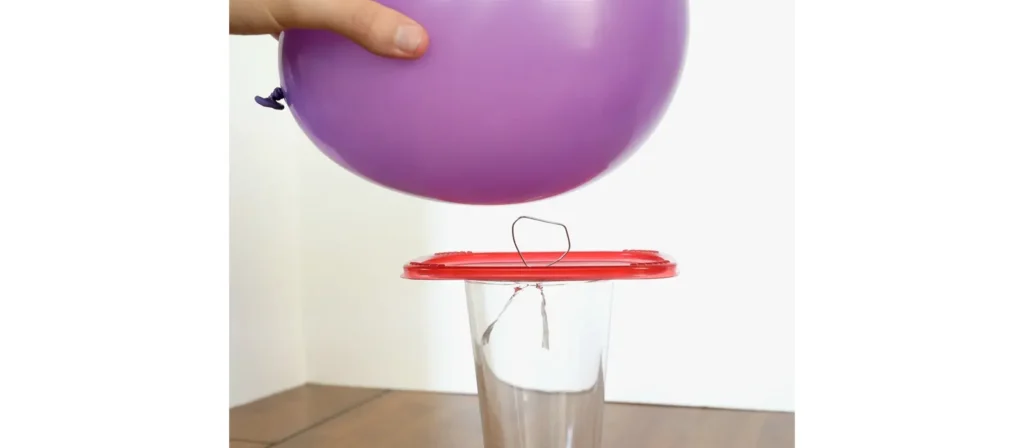
19. Water Cycle in a Bag Science Preschool Activity
Concept: Evaporation and condensation
Materials:
- Ziplock bag
- Water
- Blue food coloring
- Marker
- Tape
Instructions:
- Draw the sun, clouds, and raindrops on the bag with a marker.
- Fill the bag with a little water and food coloring.
- Seal and tape it to a sunny window.
Why It Works:
The sun heats the water, causing evaporation. Water droplets then form inside, simulating the water cycle.
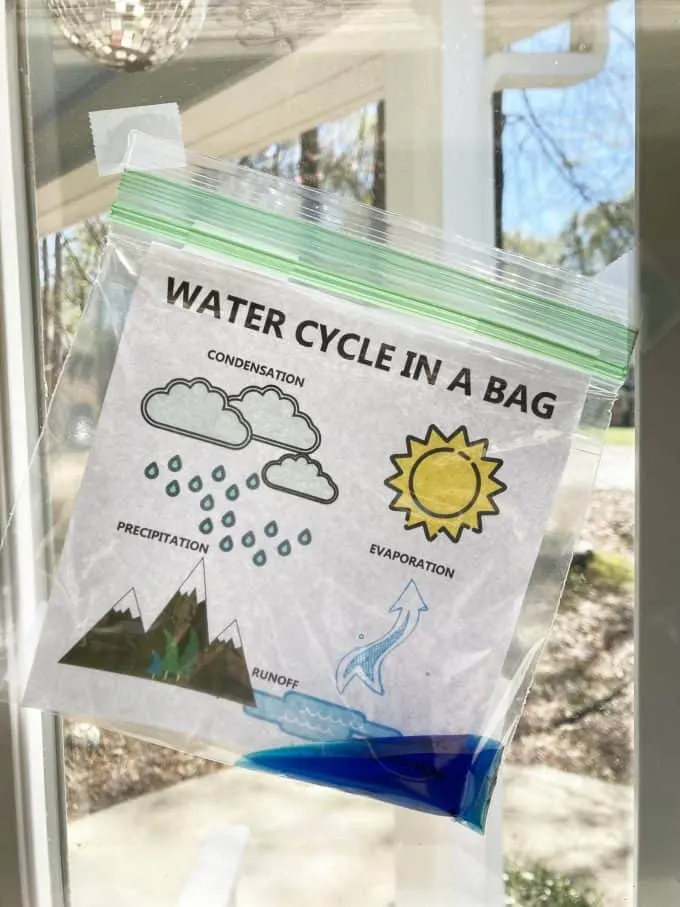
20. Problem-Solving with Puzzles Science Preschool Activity
Concept: Spatial reasoning and problem-solving
Materials:
- Various puzzles
- Blocks or matching cards
Instructions:
- Set up puzzles with different difficulty levels.
- Let kids experiment with solutions.
- Encourage them to describe their thought process.
Why It Works:
Puzzles strengthen logical thinking, patience, and problem-solving skills.
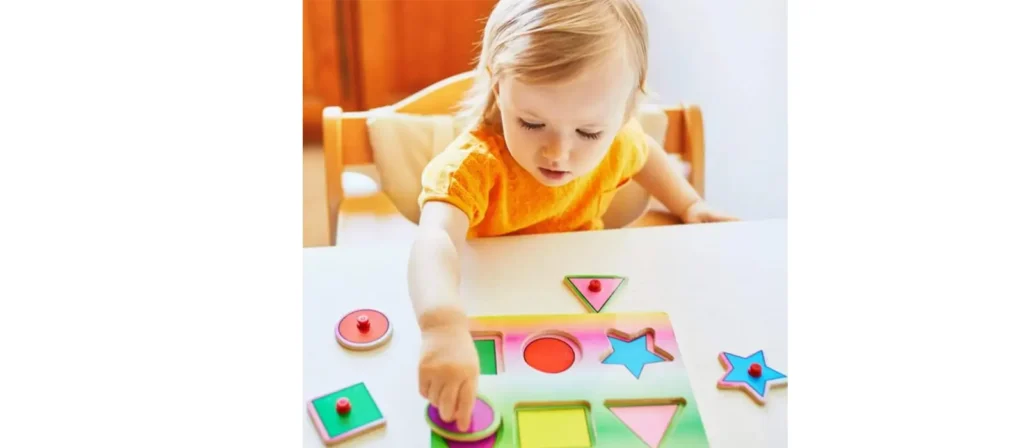
21. Touch and Feel Sensory Bins Science Preschool Activity
Concept: Sensory exploration and textures
Materials:
- Large plastic bin
- Rice, sand, or dried beans
- Small objects (buttons, toy animals, shells, or leaves)
Instructions:
- Fill the bin with a sensory base like rice, beans, or sand.
- Hide small objects inside.
- Let kids explore textures and find hidden objects.
Why It Works:
Sensory play strengthens fine motor skills and encourages observational learning.
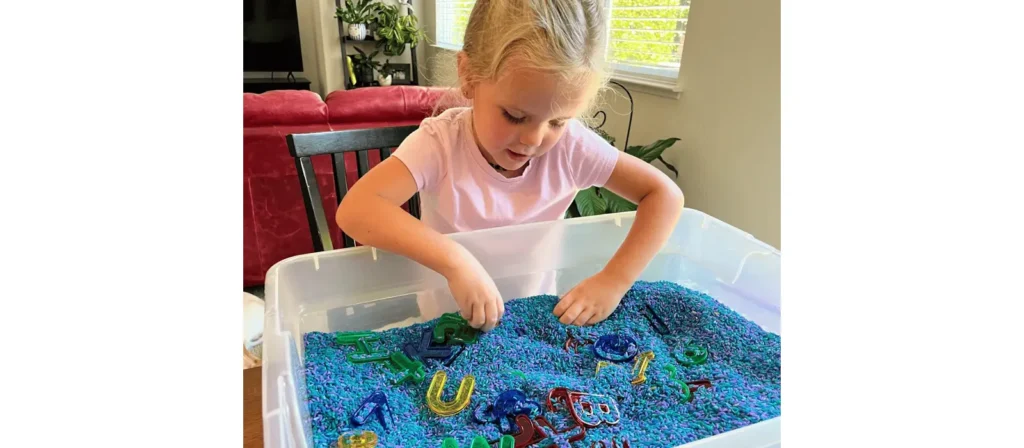
22. Frozen Bubble Science Preschool Activity
Concept: Freezing and crystallization
Materials:
- Bubble solution
- Straw or bubble wand
- Freezing outdoor temperatures (or a freezer)
Instructions:
- Blow a bubble outside in freezing weather (or place a bubble-filled plate in the freezer).
- Watch as ice crystals form inside the bubble before it pops.
Why It Works:
The water in the bubble freezes, forming delicate ice patterns, which demonstrate the freezing process.

23. Exploring Smells with a Mystery Box Science Preschool Activity
Concept: Sense of smell and observation
Materials:
- Small containers with cotton balls
- Different scents (vanilla, cinnamon, lemon, vinegar, coffee)
- A blindfold (optional)
Instructions:
- Dip cotton balls in different scented liquids.
- Place them in small containers.
- Let children smell and guess what each scent is.
Why It Works:
This science experiments for 3-year-olds sharpens sensory perception and strengthens vocabulary through descriptive words.

24. Blowing Bubbles Science Preschool Activity
Concept: Air Movement and surface tension
Materials:
- Dish soap
- Water
- Glycerin (optional for more vigorous bubbles)
- Straws or bubble wands
Instructions:
- Mix dish soap with water to create a bubble solution.
- Use different wands or straws to blow bubbles.
- Experiment with bubble sizes and shapes.
Why It Works:
The science preschool activity forms a thin film that traps air, creating bubbles, while surface tension holds them together.
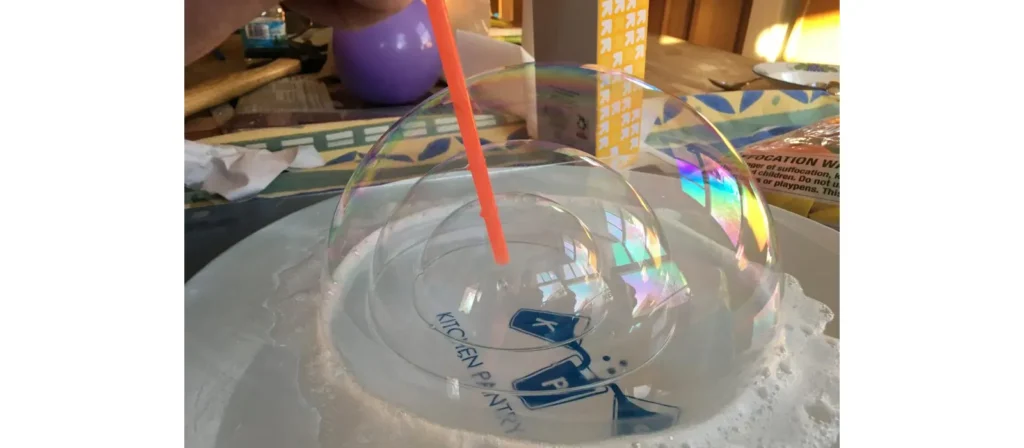
25. Waterfall Sensory Bin Science Preschool Activity
Concept: Gravity and water flow
Materials:
- Large plastic bin
- Plastic cups with holes
- Funnels and small bottles
- Water
Instructions:
- Fill the bin with water.
- Let kids pour water through cups with holes, funnels, and bottles.
- Observe how water moves through different objects.
Why It Works:
This experiment demonstrates gravity and the movement of liquids through different pathways.
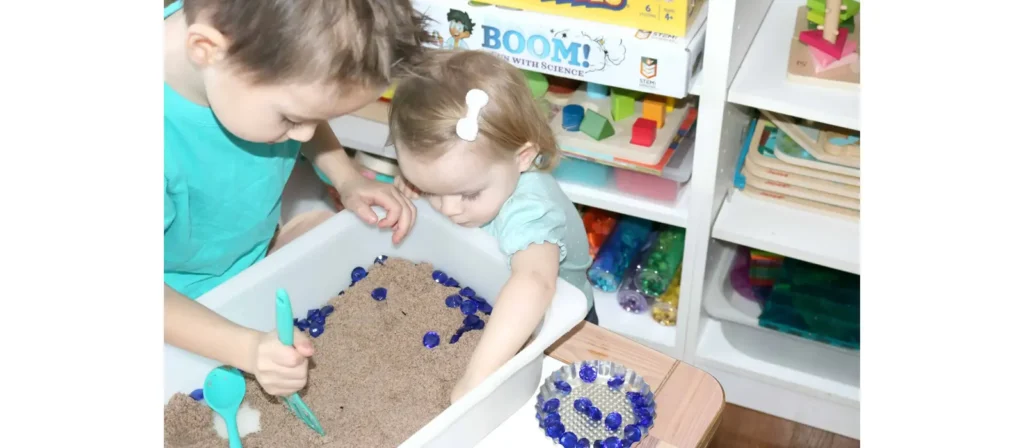
26. Bug Hunt Adventure Science Preschool Activity
Concept: Insect observation and life science
Materials:
- Magnifying glass
- Notebook and crayons
- Bug jars (optional)
Instructions:
- Go outside and look for insects.
- Observe their movement, colors, and size using a magnifying glass.
- Draw or write about what was discovered.
Why It Works:
This activity introduces biology and ecosystems, helping preschoolers learn about insect characteristics.

27. Rock Sorting by Properties Science Preschool Activity
Concept: Classification and earth science
Materials:
- A collection of rocks
- Sorting trays
- Labels for size, color, texture, and weight
Instructions:
- Collect different types of stones.
- Sort them based on size, color, or texture.
- Discuss why some rocks feel smooth and others rough.
Why It Works:
The science preschool activity helps children understand physical properties and develop classification skills.
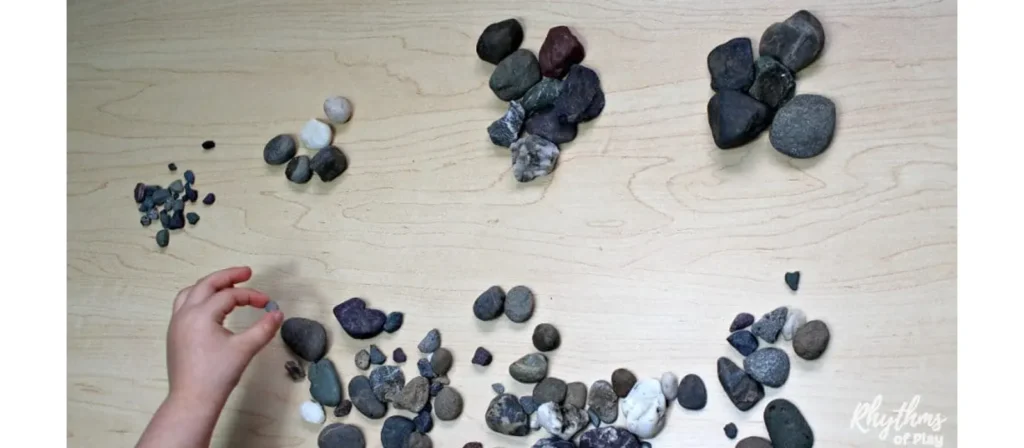
28. Exploring Wind with Paper Fans Science Preschool Activity
Concept: Air movement and force
Materials:
- Paper
- Tape
- Straws or handheld fans
Instructions:
- Fold the paper into a fan shape and tape the bottom.
- Use the fan to blow objects like feathers or cotton balls.
- Observe how different objects react to the air movement.
Why It Works:
This experiment introduces wind energy and the effect of air force on lightweight objects.
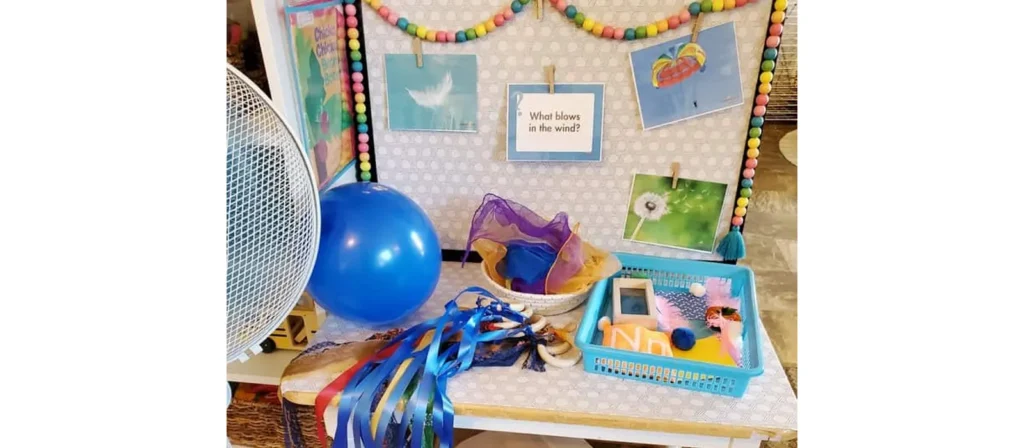
29. Building a Simple Bridge with Blocks Science Preschool Activity
Concept: Engineering and balance
Materials:
- Wooden or plastic blocks
- Small toy cars
Instructions:
- Stack blocks to create a bridge.
- Test how strong it is by placing toy cars on top.
- Adjust the design to make the bridge stronger.
Why It Works:
This activity introduces basic engineering concepts and strengthens problem-solving skills.
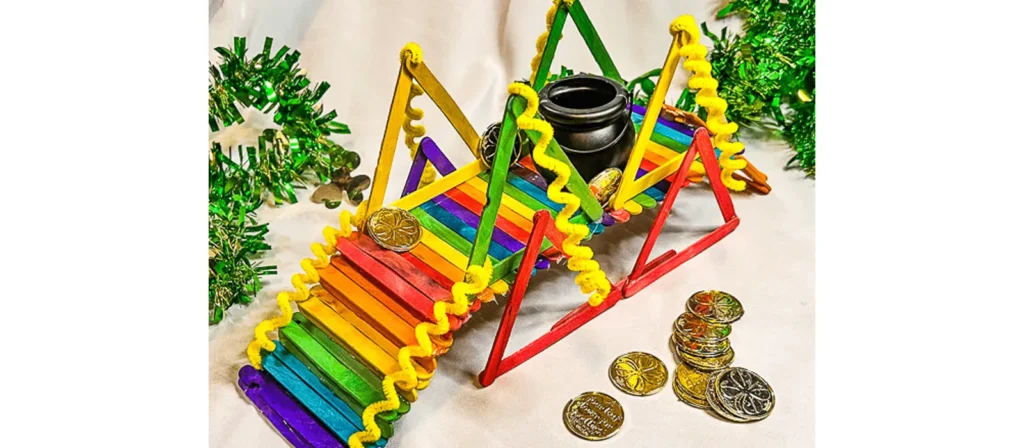
30. Weather Prediction and Observations Science Preschool Activity
Concept: Meteorology and pattern recognition
Materials:
- Paper and crayons
- Outdoor thermometer
- Cloud chart (printable)
Instructions:
- Go outside and observe the clouds.
- Record the temperature using a thermometer.
- Predict if it will rain or stay sunny based on observations.
Why It Works:
Preschoolers learn about weather changes and patterns, improving observation and prediction skills.

Preschool Science Safety: 5 Essential Guidelines
Science activities for preschoolers should be exciting, hands-on, and, most importantly, safe. Ensuring a secure environment allows young learners to explore without risk while having fun with preschool science activities. Here are key safety guidelines to follow when conducting experiments with young children:
1. Select Non-Toxic, Child-Friendly Supplies
Always choose safe household items like baking soda, vinegar, and cornstarch for science activities for preschoolers.
Opt for non-toxic food coloring and edible materials when applicable.
Avoid harsh chemicals or anything that could cause skin irritation.


2. Ensure Continuous Adult Supervision
Keep a close watch on preschoolers, especially when handling liquids, small objects, or sensory materials.
Ensure children do not put experimental materials in their mouths unless the science activity for preschoolers is food-based.
3. Introduce Clear, Simple Safety Rules
Explain that preschool science activities are for observation and exploration, not ingestion.
Demonstrate safe handling of materials, such as carefully pouring liquids or gently mixing substances.


4. Plan Age-Suitable Science Experiments
Stick to easy science activities for preschoolers that do not involve sharp objects, strong magnets, or fire.
Keep instructions simple and ensure they align with the child’s developmental stage.
By following these safety tips, preschool science activities can be fun, educational, and worry-free for kids and adults, creating a positive learning environment that encourages exploration.
Creating the Perfect Space for Science Activities in Preschool
Setting up a well-organized, safe, and engaging space is essential for successful science activities for toddlers. A dedicated science area encourages hands-on exploration while ensuring that materials are easily accessible and experiments can be conducted safely.

Key Features of a Preschool Science Area
- Child-Friendly Science Tables and Workstations
A sturdy, easy-to-clean surface is necessary for messy experiments. Tables should be at a height suitable for preschoolers, allowing them to mix, pour, and observe their experiments comfortably. - Storage for Science Materials
Organizing supplies like magnifying glasses, measuring cups, droppers, and sensory bins makes it easier for kids to explore independently. Open shelving with labeled bins helps children learn responsibility by returning items after use. - Comfortable and Safe Seating
Lightweight, ergonomic chairs ensure that preschoolers can sit comfortably while engaging in science preschool activities. Choosing furniture with rounded edges and durable materials keeps the space both safe and functional. - Interactive Learning Tools
Child-friendly microscopes, magnifying jars, and light tables enhance hands-on learning and make preschool science activities more immersive. - Washable Surfaces and Easy Cleanup Solutions
Since many science activities for preschoolers involve liquids, colors, and sensory materials, having a waterproof floor mat and a nearby sink makes cleanup stress-free and straightforward.
Upgrade Your Preschool Science Area with Our Furniture
Creating the perfect learning space starts with choosing the right furniture. Our high-quality preschool tables, storage solutions, and seating options are designed to support science activities for preschoolers, making hands-on exploration fun and safe. Whether you’re setting up a classroom, daycare, or homeschool space, our child-friendly furniture enhances learning experiences while keeping your environment organized.
Explore our preschool science area furniture collection to create an inspiring space where young scientists can discover, experiment, and grow!
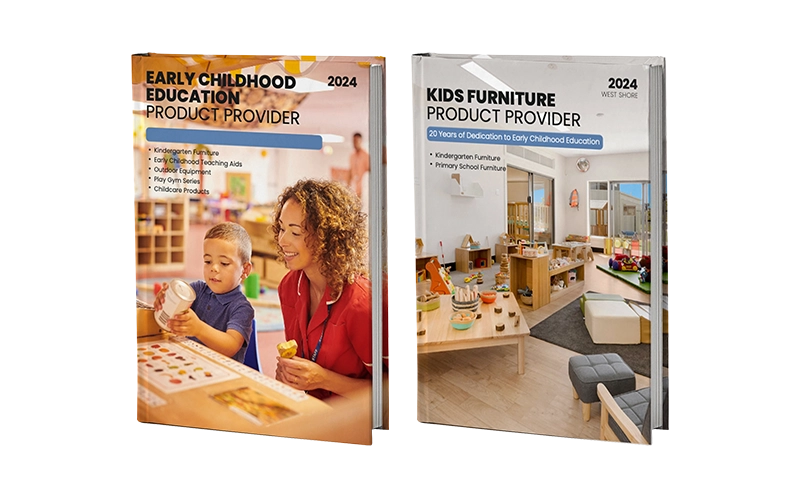
Conclusion
Science is all around us, and introducing science activities for preschoolers early helps develop curiosity, critical thinking, and problem-solving skills. Through hands-on play-based science activities, these 30 fun and easy science activities allow children to explore key scientific concepts, such as density, buoyancy, chemical reactions, states of matter, and weather patterns.
At West Shore Furniture, we understand that a well-designed learning environment is just as important as the activities. With over 20 years of experience manufacturing and supplying high-quality preschool furniture, we offer customized classroom solutions that enhance learning and creativity. From classroom design and furniture production to quality inspection and delivery, we provide a one-stop service to help educators create the perfect space for young learners. When paired with engaging science activities, our furniture helps foster an inspiring, safe, and functional learning environment where curiosity thrives.
So, gather your materials, spark some curiosity, and watch as your little scientists explore the wonders of science with excitement and joy—all in a space designed for discovery!
FAQs about science activities for preschoolers
- Why are science activities for preschoolers important?
Science activities for preschoolers encourage curiosity, problem-solving, and observation skills. They help young children develop early STEM knowledge while improving fine motor skills and creativity through hands-on exploration. - How do you introduce science activities for preschoolers?
The best way to introduce science activities for preschoolers is through play-based learning. Simple experiments with water, magnets, or colors help children discover cause and effect while making learning exciting and interactive. - What are some easy science activities for preschoolers at home?
Many science activities for preschoolers use everyday materials. Freezing toys in ice, making a rain cloud in a jar, or testing which objects float or sink are great ways to explore science at home with minimal preparation. - What materials do you need for science activities for preschoolers?
Most science activities for preschoolers require household items like baking soda, vinegar, water, food coloring, magnets, and everyday objects for observation and experimentation. - Are science activities for preschoolers safe?
Yes, most science activities for preschoolers are safe when using non-toxic materials and close adult supervision. Simple, mess-free experiments ensure a fun and safe learning experience. - Can science activities for preschoolers include STEM learning?
Absolutely! Many science activities for preschoolers introduce early STEM concepts like engineering, problem-solving, and observation, helping kids build a foundation for future learning in science and technology. - How can you make preschool science activities more fun?
Preschool science activities become more fun by using hands-on experiments like nature science experiments for preschoolers, colorful chemical reactions, or sensory play-based science activities. Keeping experiments short, engaging, and full of surprises helps maintain children’s curiosity. - Can you do science activities for 3-year-olds at home?
Yes! Science activities for 3-year-olds can be done at home using simple materials like cups, water, paper towels, and baking soda. Preschool science crafts and experiments help toddlers explore cause and effect while having fun with safe, guided activities. - Are there fun science experiments for preschoolers who love nature?
Definitely! Nature science experiments for preschoolers include planting seeds, exploring soil layers in a jar, observing insects, or testing how different leaves react to water. These activities connect children with the natural world while developing early science skills.





